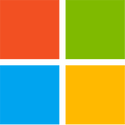Monday, February 24th 2020

Microsoft Confirms Xbox Series X Specs - 12 TFLOPs, Custom APU With Zen 2, RDNA 2, H/W Accelerated Raytracing
Microsoft has confirmed the official specs for the Xbox Series X games console, due Holiday 2020 (think November). The new specs announcement confirms the powerhouse of a console this will be, with its peak 12 TFLOPs compute being 8 times that of the original Xbox One, and twice that of the Xbox One X, which already quite capable of powering true 4K experiences. This 12 TFLOPs figure is a mighty impressive one - just consider that AMD's current highest-performance graphics card, Radeon VII, features a peak 13.4 TFLOPs of computing power - and that's a graphics card that was launched just a year ago.
The confirmation also mentions support for Hardware-Accelerated raytracing, something that all but confirms the feature being built into AMD's RDNA 2 microarchitecture (of which we are expecting news anytime now). this, alongside Variable Rate Shading (VRS) support, brings AMD to feature parity with NVIDIA's Turing, and should allow developers to optimize their performance and graphical targets without any discernible quality loss.Another very important metric, however, is still unknown: pricing. But with the new system featuring so many pieces of top-of-the-line technology, including SSD storage, this won't be a cheap endeavor. With Sony also keeping its cards close to its chest in regards to PS5 pricing (and the company even canceling their appearances at PAX East and GDC), we'll have to wait and see how interesting these systems really are from a value standpoint.
However, I have to throw my two cents in here: Microsoft's alleged approach towards releasing a top-tier (and top pricing) console in the Xbox Series X alongside a cheaper, more nimble system does paint the next-gen scenario as more positive for Microsoft than Sony, should the Japanese company choose to release a single, premium system (which some are saying hardware parts costs are set at $450).
Features of XBOX Series X:
Source:
Microsoft
The confirmation also mentions support for Hardware-Accelerated raytracing, something that all but confirms the feature being built into AMD's RDNA 2 microarchitecture (of which we are expecting news anytime now). this, alongside Variable Rate Shading (VRS) support, brings AMD to feature parity with NVIDIA's Turing, and should allow developers to optimize their performance and graphical targets without any discernible quality loss.Another very important metric, however, is still unknown: pricing. But with the new system featuring so many pieces of top-of-the-line technology, including SSD storage, this won't be a cheap endeavor. With Sony also keeping its cards close to its chest in regards to PS5 pricing (and the company even canceling their appearances at PAX East and GDC), we'll have to wait and see how interesting these systems really are from a value standpoint.
However, I have to throw my two cents in here: Microsoft's alleged approach towards releasing a top-tier (and top pricing) console in the Xbox Series X alongside a cheaper, more nimble system does paint the next-gen scenario as more positive for Microsoft than Sony, should the Japanese company choose to release a single, premium system (which some are saying hardware parts costs are set at $450).
Features of XBOX Series X:
- Next Generation Custom Processor: Xbox Series X is our most powerful console ever powered by our custom designed processor leveraging AMD's latest Zen 2 and RDNA 2 architectures. Delivering four times the processing power of an Xbox One and enabling developers to leverage 12 TFLOPS of GPU (Graphics Processing Unit) performance - twice that of an Xbox One X and more than eight times the original Xbox One. Xbox Series X delivers a true generational leap in processing and graphics power with cutting edge techniques resulting in higher framerates, larger, more sophisticated game worlds, and an immersive experience unlike anything seen in console gaming.
- Variable Rate Shading (VRS): Our patented form of VRS empowers developers to more efficiently utilize the full power of the Xbox Series X. Rather than spending GPU cycles uniformly to every single pixel on the screen, they can prioritize individual effects on specific game characters or important environmental objects. This technique results in more stable frame rates and higher resolution, with no impact on the final image quality.
- Hardware-accelerated DirectX Raytracing: You can expect more dynamic and realistic environments powered by hardware-accelerated DirectX Raytracing - a first for console gaming. This means true-to-life lighting, accurate reflections and realistic acoustics in real time as you explore the game world.
- SSD Storage: With our next-generation SSD, nearly every aspect of playing games is improved. Game worlds are larger, more dynamic and load in a flash and fast travel is just that - fast.
- Quick Resume: The new Quick Resume feature lets you continue multiple games from a suspended state almost instantly, returning you to where you were and what you were doing, without waiting through long loading screens.
- Dynamic Latency Input (DLI): We're optimizing latency in the player-to-console pipeline starting with our Xbox Wireless Controller, which leverages our high bandwidth, proprietary wireless communication protocol when connected to the console. With Dynamic Latency Input (DLI), a new feature which synchronizes input immediately with what is displayed, controls are even more precise and responsive.
- HDMI 2.1 Innovation: We've partnered with the HDMI forum and TV manufacturers to enable the best gaming experience through features such as Auto Low Latency Mode (ALLM) and Variable Refresh Rate (VRR). ALLM allows Xbox One and Xbox Series X to automatically set the connected display to its lowest latency mode. VRR synchronizes the display's refresh rate to the game's frame rate, maintaining smooth visuals without tearing. Ensuring minimal lag and the most responsive gaming experience.
- 120 fps Support: With support for up to 120 fps, Xbox Series X allows developers to exceed standard 60 fps output in favor of heightened realism or fast-paced action.

139 Comments on Microsoft Confirms Xbox Series X Specs - 12 TFLOPs, Custom APU With Zen 2, RDNA 2, H/W Accelerated Raytracing
anyway
5700xt=2070
9.75tflop=7.5tflop
to get 12 tflop rdna1 power turing would need 9.2tflop,which is around 2070 super FE (9.1)
2080 super is 11 tflops for comparison
consoles getting a 2070 super - this is really good,this card pretty much rips through 1440p ultra ATM.If the price is $500 it's really good for current gen.Dunno about ampere,with 7nm you may get current 2070 super performance at $350.
120 FPS at 1080p (its not stated if that figure is at 4K or what, but I doubt it) at console-level is welcome. Now they just need to make mainstream HDTVs (e.g. less than $600) that have real 120+ Hz panels. Alternative is just to hook the console up to a monitor and route the audio to external speakers.
RTX 2070 - 1862Mhz -> 8.6 TFLOPs (100%) www.techpowerup.com/review/nvidia-geforce-rtx-2070-founders-edition/37.html
RTX 2070 Super - 1879Mhz -> 9.6 TFLOPs (111.6%) www.techpowerup.com/review/nvida-geforce-rtx-2070-super/33.html
RX 5700 XT - 1887Mhz -> 9.7 TFLOPs (112.8%) www.techpowerup.com/review/amd-radeon-rx-5700-xt/34.html
Another thing is that this is based on RDNA2 and we don't know how much better It's compared to the first RDNA architecture.
5700XT is RDNA and 9.7Tflops.
RDNA2 chip at 12T should be about 20%+ faster, so around 2080.
Next gen consoles are going to be insane value.
PS
It is also curious that AMD is sitting on a 2080 perf level 320-330mm2 chip and not releasing it.
Turing users are already set, otherwise it's case of getting a discrete RDNA2 card or a shiny new Ampere card.
8cores * 4.4Ghz * 32FLOPs -> 1,13 TFLOPs
Besides the myth that the current gen consoles would help AMD storm ahead didn't come to shit either.
www.tomshardware.com/news/rtx_2080-ray_tracing-games-list,37669.html
Late 2019:
www.digitaltrends.com/computing/games-support-nvidia-ray-tracing/
So they went from 11 to 10 titles that support SOME of the RTX features. Remind me please, what's Nvidia's GPU marketshare? Sure, they're waiting for AMD to keep up...